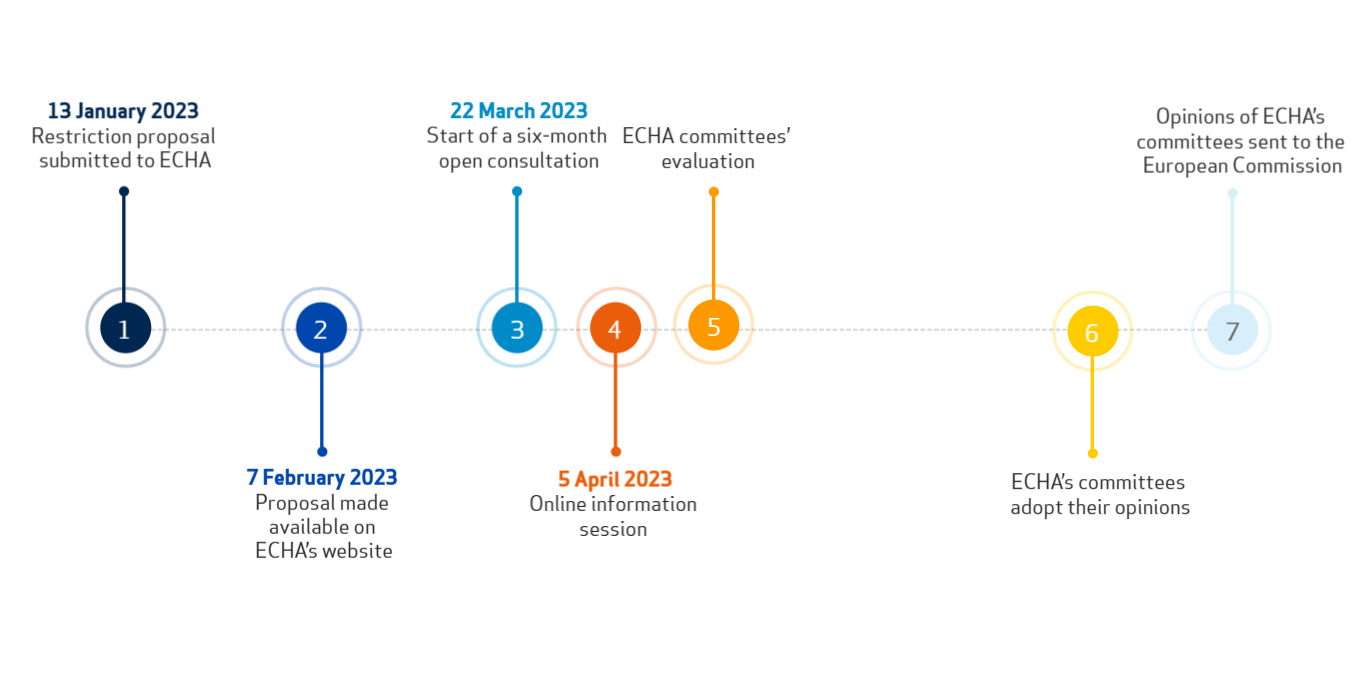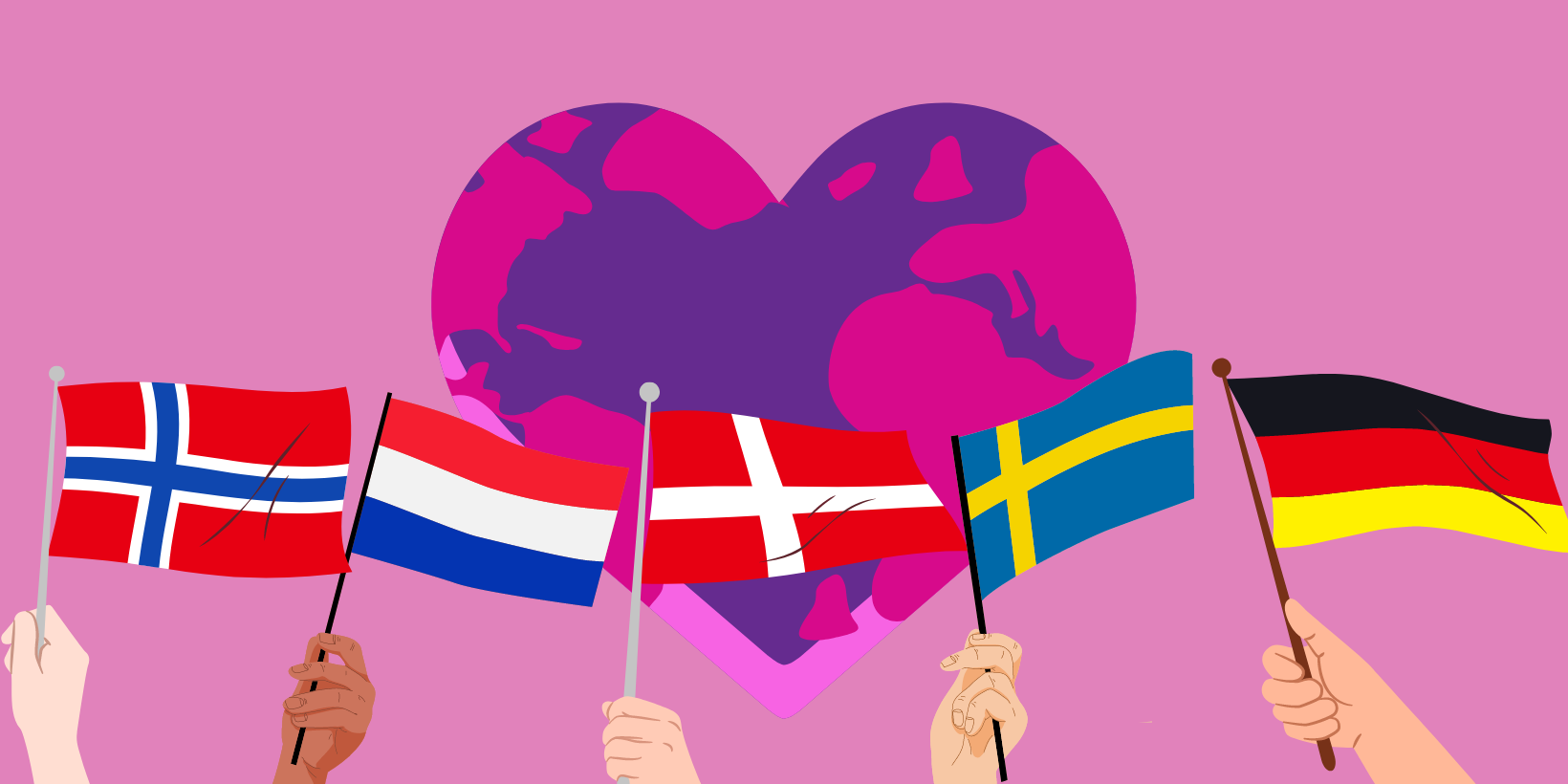Written by: Maya Galinsky
PFAS: Europe is in the process of making history!
Today, February 7th, 2023, the European Chemicals Agency (ECHA) released the details of a proposed restriction ban with the aim of reducing PFAS emissions into the environment. PFAS are nearly indestructible and, once produced, easily contaminate and pass through soil, water, and air, and build up in fish and wildlife. Scientific studies suggest that exposure to PFAS in the environment are linked to harmful health effects such as reproductive effects, developmental delays, increased risk of cancer, reduced immune system, hormonal issues, and increased cholesterol. This ban, on the basis of the EU Reach Regulation on chemical substances, was submitted by the Netherlands, Germany, Denmark, Norway, and Sweden and has been years in the making. Led by the Netherlands and Germany in a joint coordinating role, the proposal was officially submitted to ECHA on January 23rd, 2023, and published today. Currently, the European Commission is on track to present the ban to Member States in 2025. If the ban is passed, it will constitute one of Europe’s largest chemical substance bans ever.
This proposal would reduce the amount of PFAS found in the environment in the grand scheme of things. Under the restriction proposal, depending on a company’s use of the toxin, they will have a year and a half to a maximum of 12 years to introduce an alternative. Companies must comply with these changes if the European Commission assumes the proposal. Function Manager Grete Lottrup Lotus from the Danish Environmental Protection Agency shares that this change would force change in the way companies address manufacturing and
“that as many products as possible should be free of PFAS, so that we can curb emissions to the environment. For many applications, alternatives to PFAS already exist on the market, for others, their development must be accelerated, and we hope that this work will have a prominent place in the industry” (Regulering af mere end 10.000 PFAS-stoffer på vej., 2023).
By restricting the amount of PFAS that is in the environment, related products and processes will be safer for people. Currently, per- and polyfluoroalkyl substances (PFAS) are applied in roughly 10,000 substances (Regulering af mere end 10.000 PFAS-stoffer på vej., 2023). Since PFAS do not break down in the environment, there is no way to get rid of PFAS for good. Without restriction, “authorities estimate that around 4.4 million tonnes of PFASs would end up in the environment over the next 30 years unless action is taken” (ECHA, 2023). Moreover, if no action is taken, PFAS levels will continue to rise to a level that will reach widespread negative effects on people’s health.
The next step:
The restriction proposal’s draft has been “under construction” for several years, led by the Netherlands and Germany. The Netherland’s National Institute for Public Health and the Environment shares that on March 22nd, 2023, ECHA will open formal consultations on the restriction proposal where “interested parties may submit additional information, for instance to justify amending specific points of the proposal” (RIVM, 2023). Additionally, on April 5th, 2023, an online information session will take place to “explain the restriction process and help those interested in participating in the consultation” (ECHA, 2023). After deciding whether to amend the proposal based on such additional information, ECHA will submit the conclusive proposal to the European Commission, which will be decided in 2025.

Reference:
All news – ECHA. (February 7, 2023). Echa.europa.eu. Retrieved February 7, 2023, from https://echa.europa.eu/-/echa-publishes-pfas-restriction-proposal
Details of proposed European PFAS ban released | RIVM . (February 7, 2023). Www.rivm.nl. Retrieved February 7, 2023, from https://www.rivm.nl/en/news/details-of-proposed-european-pfas-ban-released
Regulering af mere end 10.000 PFAS-stoffer på vej. (February 7, 2023). Mst.dk. Retrieved February 7, 2023, from https://mst.dk/service/nyheder/nyhedsarkiv/2023/feb/regulering-af-mere-end-10000-pfas-stoffer-paa-vej/

